With a career spanning over two decades, Michele Pasca di Magliano, Director of Zaha Hadid Architects (ZHA) has established himself as a key figure in contemporary architecture. He carries the torch for ZHA, a globally acclaimed leader in architecture renowned for its avant-garde designs and ground-breaking projects.
Industry Insider spoke with Michele before his visit to New Zealand in April to be keynote speaker at Design Experience and to hear a bit about his topic: ‘Focusing on design-driven innovation and the impact that architecture has on the everyday life of the contemporary city’.
Founded by the visionary architect Zaha Hadid in 1979, Zaha Hadid Architects (ZHA) is a formidable brand in the world of architecture. Known for its avant-garde designs, ZHA has redefined the architectural landscape with its innovative approach to form, space, and technology.
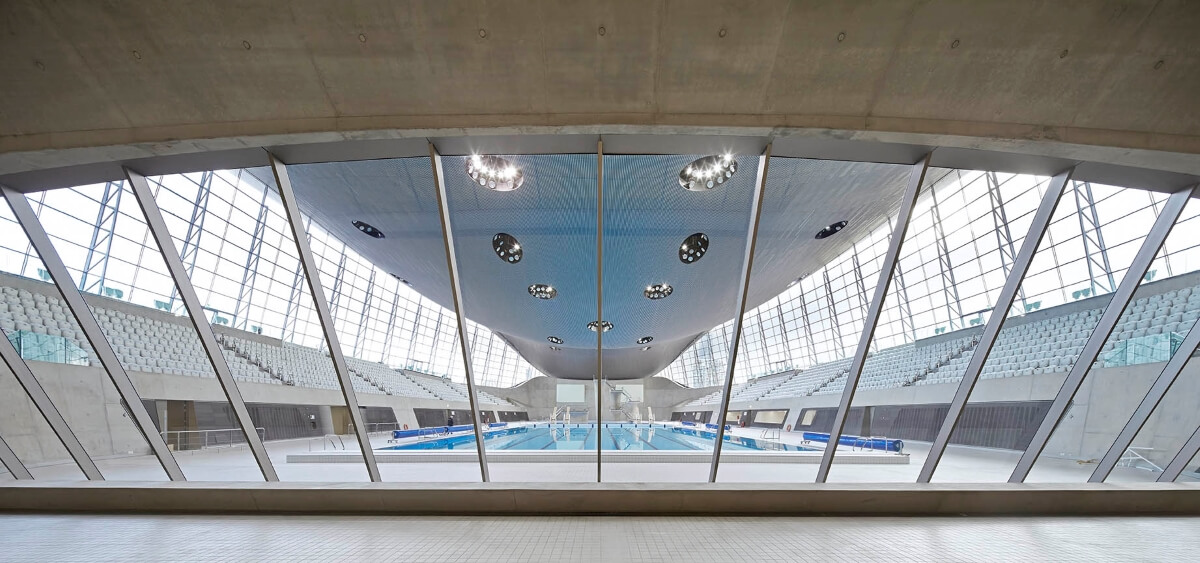
London Aquatics Centre supplied by Zaha Hadid Architects
ZHA’s projects are numerous and span the globe, including the London Aquatics Centre for the 2012 Olympics, the Heydar Aliyev Center in Baku, Azerbaijan, the Guangzhou Opera House in China, and the MAXXI Museum of 21st Century Arts in Rome.
It was Zaha herself that invited young graduate Michele Pasca di Magliano to join ZHA in 2004 and he was immediately set on a fast-track to helping create some of the world’s most iconic developments.
“I was at the AA, (the Architectural Association), which Zaha herself attended and taught at years before, and I met her at one of our end-of-the-year reviews,” says Michele.
“She said: “Look, I’ve got a big project in China. Do you mind joining and going straight to Beijing?” And I didn’t mind. To be honest, I was just starstruck that she spoke to me,” he says.
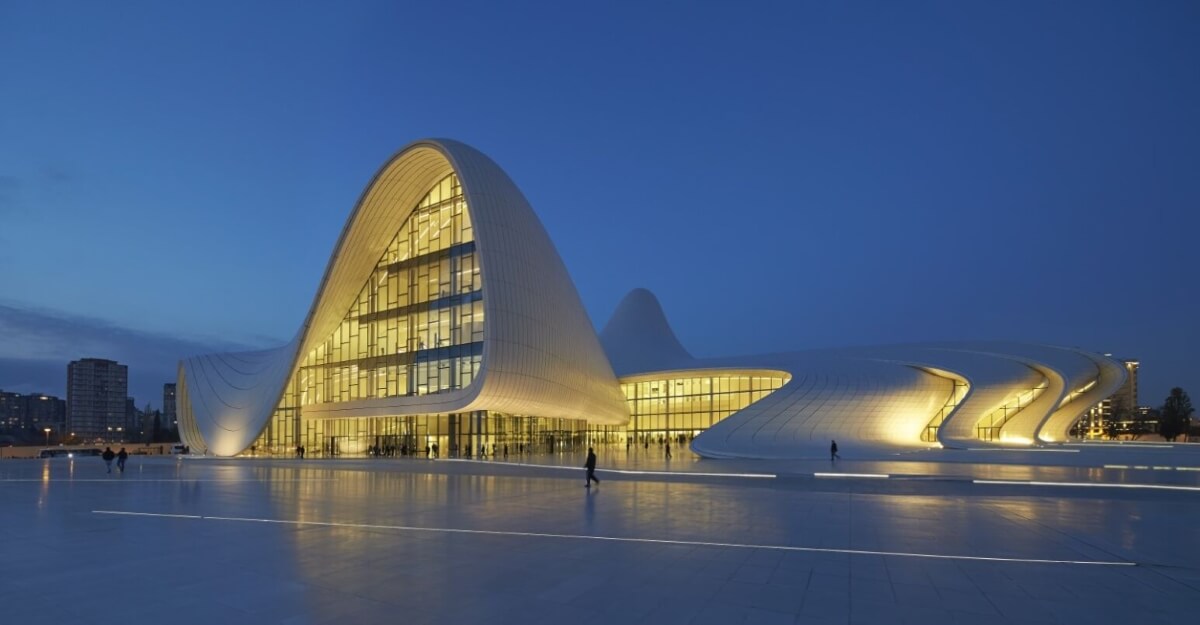
Heydar Aliyev Cultural Centre supplied by Zaha Hadid Architects
So, despite not having travelled further East than Greece in his life, the young architect from Naples found himself in the great, grey cities of China at a pivotal time for that nation.
“When I went to Beijing for the first time, it felt like a very different place. It was very sad. It was very rundown. But there was a sense of possibilities. There were a lot of young people starting up new businesses, creating a new world. And the design and architecture was very interesting because the Chinese had a real sense of wanting to create something new,” he says.
That striving for newness meshed perfectly with Zaha Hadid’s design philosophy.
“Zaha always had this ambition of creating futuristic cities and places where we could create new possibilities and where things could be reinterpreted.
“So, going to a new market helped everyone. It helped me as a young architect and helped Zaha who was not getting much built in Europe at the time. And then immediately she had these huge opportunities in a country that was trying to reinvent itself and move away from this kind of Soviet-era grey blocks to what is the Beijing of today,” Michele says.
For the European-born architect, the scale, and the demand for truly ground-breaking design solutions made for the perfect start to his career – not to mention the responsibility of representing the Zaha Hadid brand.
“One of the things we always face is, when you have such a strong recognisable brand such as Zaha Hadid Architects – there is a lot of interpretation, even from our clients on what our design should look like.
“So, every time we come up with a new design there’s always a little bit of friction and a client might say that: “It’s not like what you’ve done in the past”. And you’re always trying to explain that you’re trying to reinterpret and move forward, because obviously, we don’t want to be repeating ourselves.”
Michele says that relocation is an ever-present challenge, with variations from country to country – different inputs, different physical conditions and different ‘interferences’ within the design process. But while these elements contribute to make every project unique, the ZHA design ethos applies across the world.
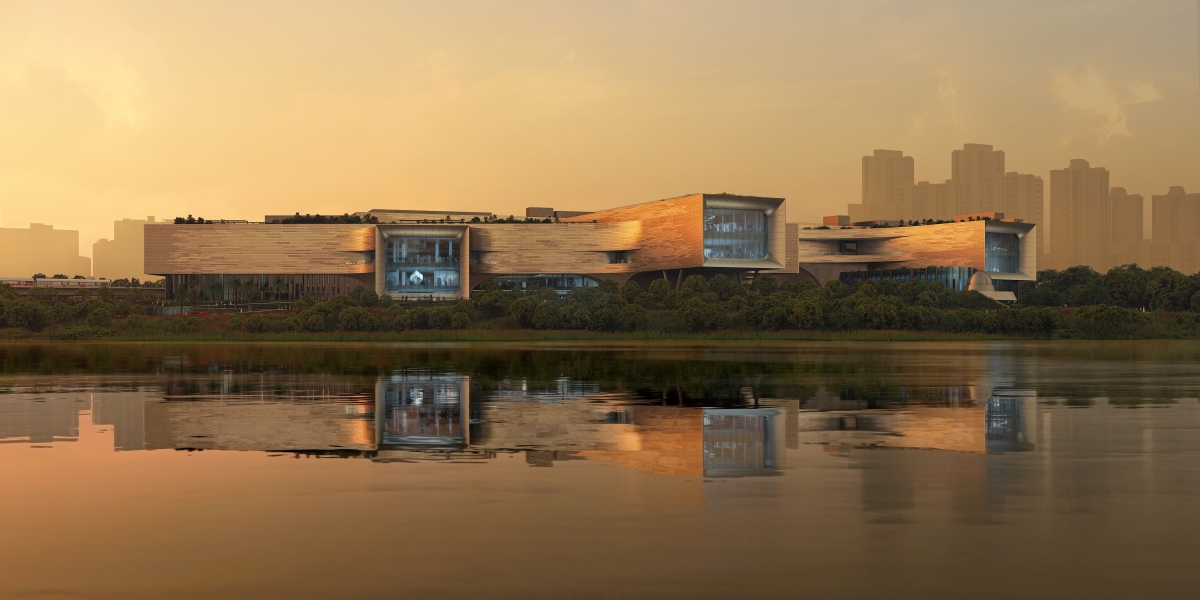
New Singapore Science Centre supplied by Zaha Hadid Architects
“I really believe that design comes first and dictates the needs. And then the industry is there to deliver the design and not the other way around. So, we shouldn’t be limited to what has been done in the past.
“But rather, we should be thinking about what is the perfect answer to a specific site, or specific location. Whether you’re viewing the ocean, whether you’re on the top of the hill, whether you have a curved site, whether you have contact with nature…
“And then when you deal with materials, geometries, and inspirations that come from a specific project, it becomes very, very unique. And the technological challenges follow,” he says.
Michele says there’s a question of how much you can push the market, and how much you can push the builders. But, he says he’s seeing more of his clients understanding that efficiency is not just what can be built as cheaply as possible, but that buildings are there to last.
“That’s one of the key drivers of my design philosophy is thinking about redefining efficiency in a way that rotates around the end users – the citizens that are going to be facing this building for a long time, the people that are going to inhabit it and the people that are going to use it.
“And creating an inspiration for the next generation, rather than just thinking about a very protective market, which is the developers, builders, the contractors and sometimes the city planners,” he says.
Sustainability has always played a role in Michele’s design thinking, but it is in emerging markets like China that he’s really being challenged to push that envelope.
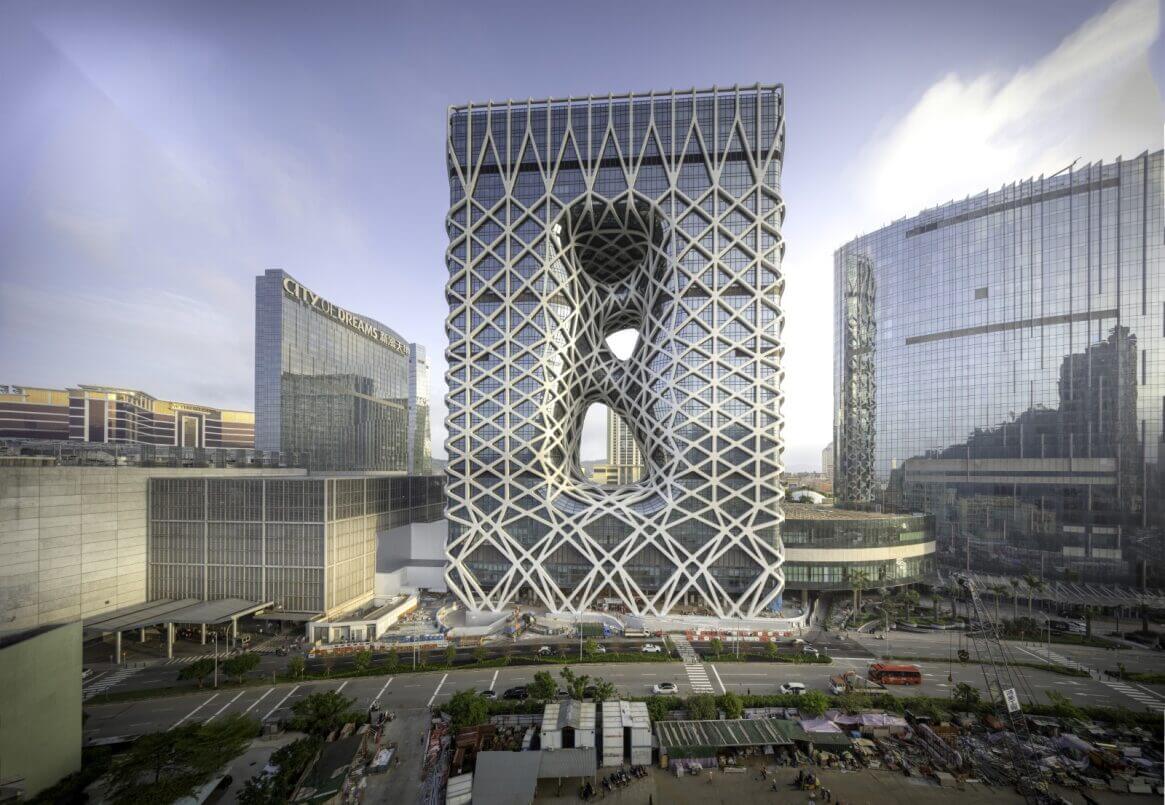
Mopheus Hotel supplied by Zaha Hadid Architects
“To be fair to ourselves, we’re just getting started on sustainability. China is a very good example of a country that has had a very fast industrialisation in the past 20-30 years and has already challenged themselves into achieving very high standards of sustainability.
“I did a tower where the client actually gave us the brief for building the most sustainable building in Shanghai. But I have to say, a lot of times you still have the feeling, not just in China, but all over the world, that clients will always try to do the least they can.
“And in the end, once you’re cutting corners, once construction costs are really coming into play and your budgets are getting stricter, you get into a point where actually, a lot of the most technologically advanced solutions get watered down,” he said.
Michele is a very strong believer in establishing good passive design even before he starts thinking about using renewables or using smart facades.
“If you have a fully glazed facade facing the sun, you know you’re going to run into trouble. There’s no option other than having to shade it in the future. Or west-facing facades in China – the afternoon sun is such a big problem.
“So, if you’re aware of those elements, and those limitations, and you think about them very, very early on in the design process, your starting point is already going to be much, much better,” he says.
Michele says the ZHA team look at every material and component for its sustainable attributes.
“We think about what type of cement we use, what type of stones we use, what type of reinforcement do we use in our concrete. Then it becomes a little bit like creating the kind of cutting-edge technology that is going to eventually filter down to the overall industry into the mainstream.
“So there’s a lot of things to think about and a lot of things to try and bring from the ethical and design and future challenges all the way down to the technology constructions,” he says.
So, does Michele feel we’re any closer to Zaha Hadid’s vision of creating futuristic cities and places with new possibilities?
“There’s a lot of different layers to it. One of the beautiful sides of architecture is thinking of the future city. Some of our projects could take seven to eight years to get built. And then they have to be sold, they have to be rented out, people will go live in there. So they’re going to be used by new generations.
“So, you’re not just physically building a new world, and physically building a more efficient tower or a higher performance building, but actually, you’re building living/working spaces for the generation who will then run the world in years to come. And to me, that’s the really exciting part,” he says.
Michele uses the example of the pool ZHA designed for the London Olympics as a building that had an impact greater than the sum of its components.
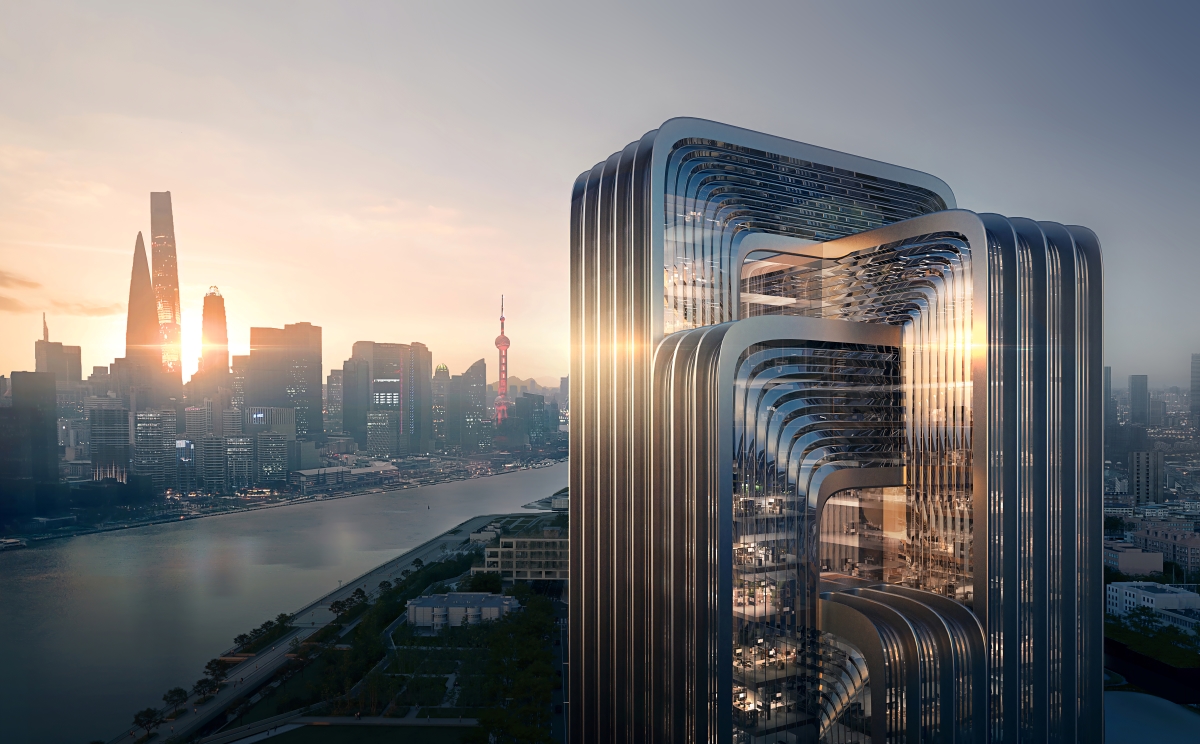
Unicorn Island Chengdu supplied by Zaha Hadid Architects
“That single building alone, which was incredibly challenging, highly scrutinized, and incredibly difficult to build, actually inspired a whole generation of British swimmers and families – from an increased British participation in competitive swimming competitions to ultimately saving lives because more people learned how to swim,” he says.
“So, it’s not just about ‘how do you create the city of the future?’ It’s more about, ‘what does the city of the future look like?’ Sometimes it’s about health, sometimes it’s about saving lives, sometimes it’s about connecting one another, sometimes it’s about getting a place where different companies can collaborate in different ways.”
“And questions like: can you live in this place without using a car? Can you live in this place without needing to commute from home to work and actually have access to what you need in a very close proximity? Is there an easier way of life?
“So that’s what we’re trying to create. It’s not easy. It’s not cheap. And there are a lot of people to convince, from clients to builders to city planners, to end users. There’s a lot of very strong arguments and very, very clear discussions on why things get done in a certain way rather than another,” he says.
In the end, it’s all about staying strongly focused on design.
“Our founder, Zaha, was a true hero for all of us” says Michele. I think what she was able to do, was to bring back the focus on design. And the reason that made her so prominent against her peers is she shifted away from the idea of architecture being efficient, being high tech, and being modern for the sake of being modern, to the idea that design becomes the key driver. And I think that’s a very contemporary notion. It’s something we can all relate to nowadays,” Michele says.
Join us at Design Experience as Michele Pasca di Magliano presents recent works from Zaha Hadid Architects, focusing on design-driven innovation and the impact that architecture has on the everyday life of the contemporary city. 29th April – 2nd May. See the website for details: https://designexperience.co.nz/

